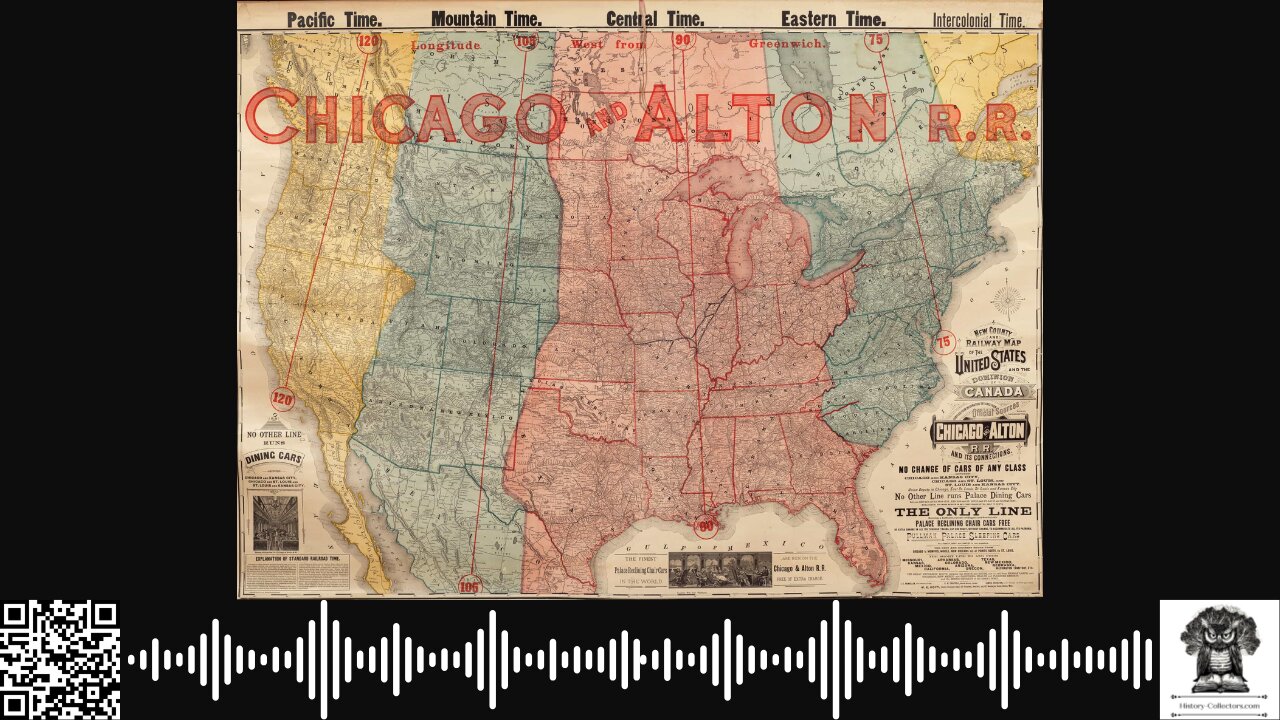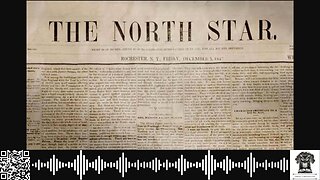Premium Only Content

#OnThisDate November 18, 1883 - The Day Of Two Noons
At Precisely Noon, North American Railroads Implemented Standard Railway Time, Revolutionizing Timekeeping Across The United States And Canada.
Prior To This, Each Locality Operated On Its Own Solar Time, Leading To A Chaotic Patchwork Of Over 300 Local Times, Which Complicated Scheduling And Posed Safety Risks For The Rapidly Expanding Railroad Industry.
The Catalyst For Change Was William F. Allen, The Editor Of The Traveler's Official Railway Guide And Secretary Of The General Time Convention.
Recognizing The Inefficiencies And Dangers Of The Existing System, Allen Proposed Dividing The Continent Into Five Standardized Time Zones: Intercolonial, Eastern, Central, Mountain, And Pacific.
This Proposal Was Adopted By The General Time Convention In October 1883.
The Implementation On November 18, Known As "The Day Of Two Noons," Required Communities To Adjust Their Clocks, Resulting In Two Noons On That Day—One According To Local Solar Time And Another To The New Standard Time.
Major Cities Like New York And Chicago Synchronized Their Clocks To The New System, While Some Smaller Towns Resisted, Preferring Their Traditional Local Times.
Despite Initial Resistance, The Practicality Of Standardized Time For Commerce And Communication Led To Widespread Adoption.
This Voluntary System Remained In Place Until March 19, 1918, When The U.S. Congress Enacted The Standard Time Act, Officially Establishing Time Zones And Daylight Saving Time.
The Implementation Of Standard Railway Time Was A Pivotal Moment In American History, Reflecting The Transformative Impact Of The Railroad Industry On Daily Life And Laying The Foundation For The Uniform Timekeeping System We Rely On Today.
--------------------------------------------------------------------------------------------
Whether You're Commuting, Working Out, Or Just Relaxing, These Recordings Give You The Freedom To Absorb Knowledge At Your Own Pace, Wherever You Are.
Tune In To Focus Deeply On The Content Without Visual Distractions, And Easily Control Playback To Review Complex Topics As Needed.
Perfect For Auditory Learners Or Anyone Looking To Maximize Their Time — Click Play All To Listen Now And Transform Your Time Into A Productive Learning Session!
For Enthusiasts Of Historical Ephemera, Visit History-Collectors.com To Find Collectibles That Might Complement Your Collection.
You Can Own A Piece Of History.
Before You Go, A Simple Way To Support The Efforts Of This Channel Is To Like, Subscribe, Comment And Share.
-
 2:36
2:36
History-Collectors.com
20 hours ago#OnThisDate December 3, 1847 - A Voice For Freedom
101 -
 1:14:19
1:14:19
The Anthony Rogers Show
13 hours agoEpisode 248 - Light Language & Intergalactic Gifts In The Higher Realms
52K6 -
 2:38:12
2:38:12
Tundra Gaming Live
9 hours ago $3.26 earnedThe Worlds Okayest War Thunder Stream
37K1 -
 10:57
10:57
Tactical Advisor
12 hours agoNEW Compact Echelon | Springfield 4.0 C (FIRST LOOK)
72.3K1 -
 1:23:56
1:23:56
Glenn Greenwald
12 hours agoBiden Pardons Hunter After Months Of Vowing He Wouldn't; Plus: Biden's Career Imprisoning Crack Addicts | SYSTEM UPDATE #374
130K134 -
 1:28:16
1:28:16
Barry Cunningham
8 hours agoBANNED ON YOUTUBE SERIES: Inside The Border Crisis! Barry Cunningham Interview With Border Agent
62.4K87 -
 2:18:59
2:18:59
WeAreChange
10 hours agoCOUP ATTEMPT?! Dems Trying To Usurp Control Of Military In Move Against Trump
120K36 -
 1:17:41
1:17:41
Josh Pate's College Football Show
8 hours ago $2.98 earnedCFP Rankings Reaction | Conference Championship Predictions | New JP Poll | Portal Chaos Ahead
39.5K1 -
 59:27
59:27
The StoneZONE with Roger Stone
10 hours agoWill America’s Sheriffs Aid the Deportation of Violent Illegals? w/ Sheriff Richard Mack | StoneZONE
36.7K3 -
 4:18:52
4:18:52
RamrodJenkins
11 hours agoI am loving Rumble! Come on by and hang out!
23.6K7